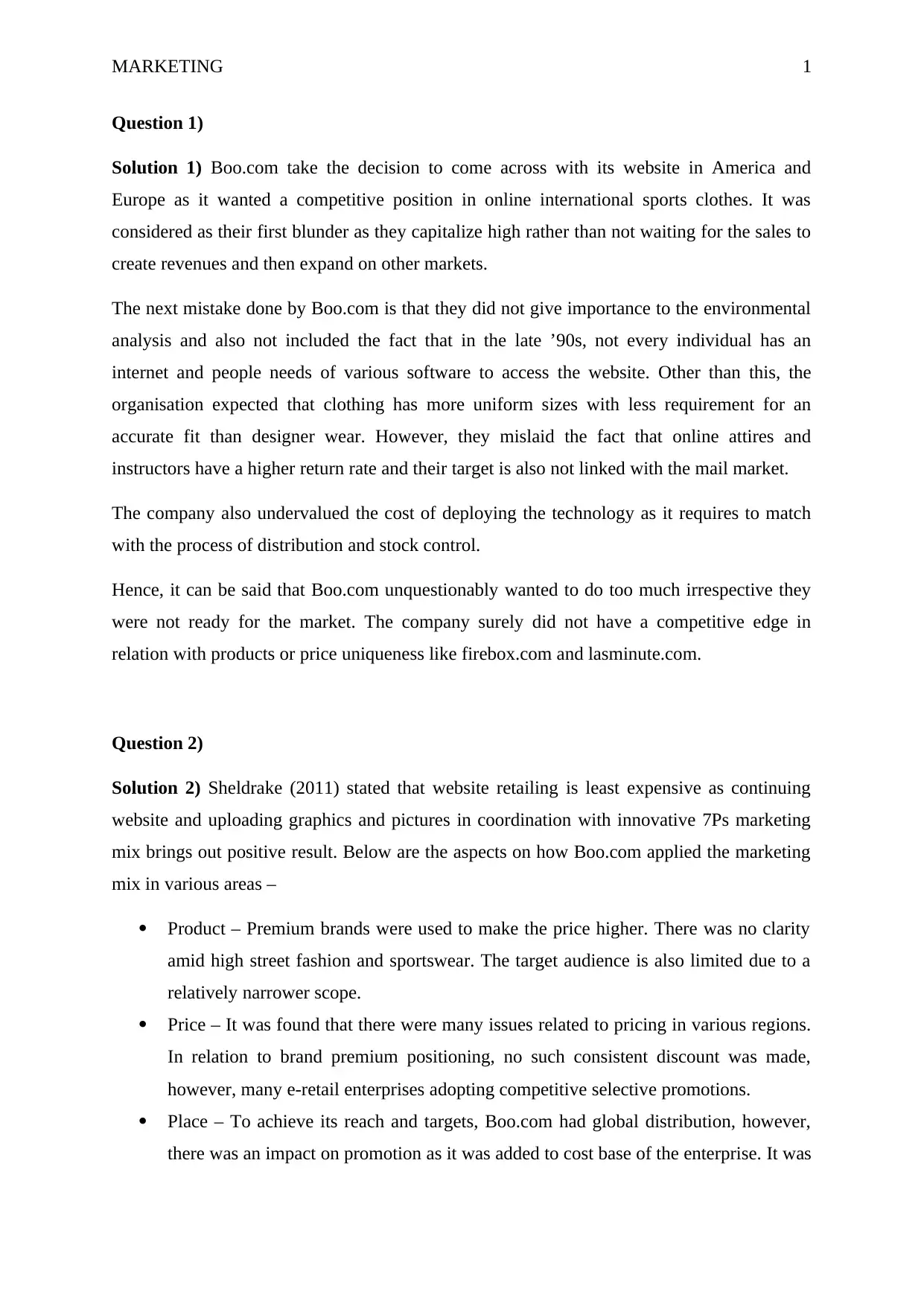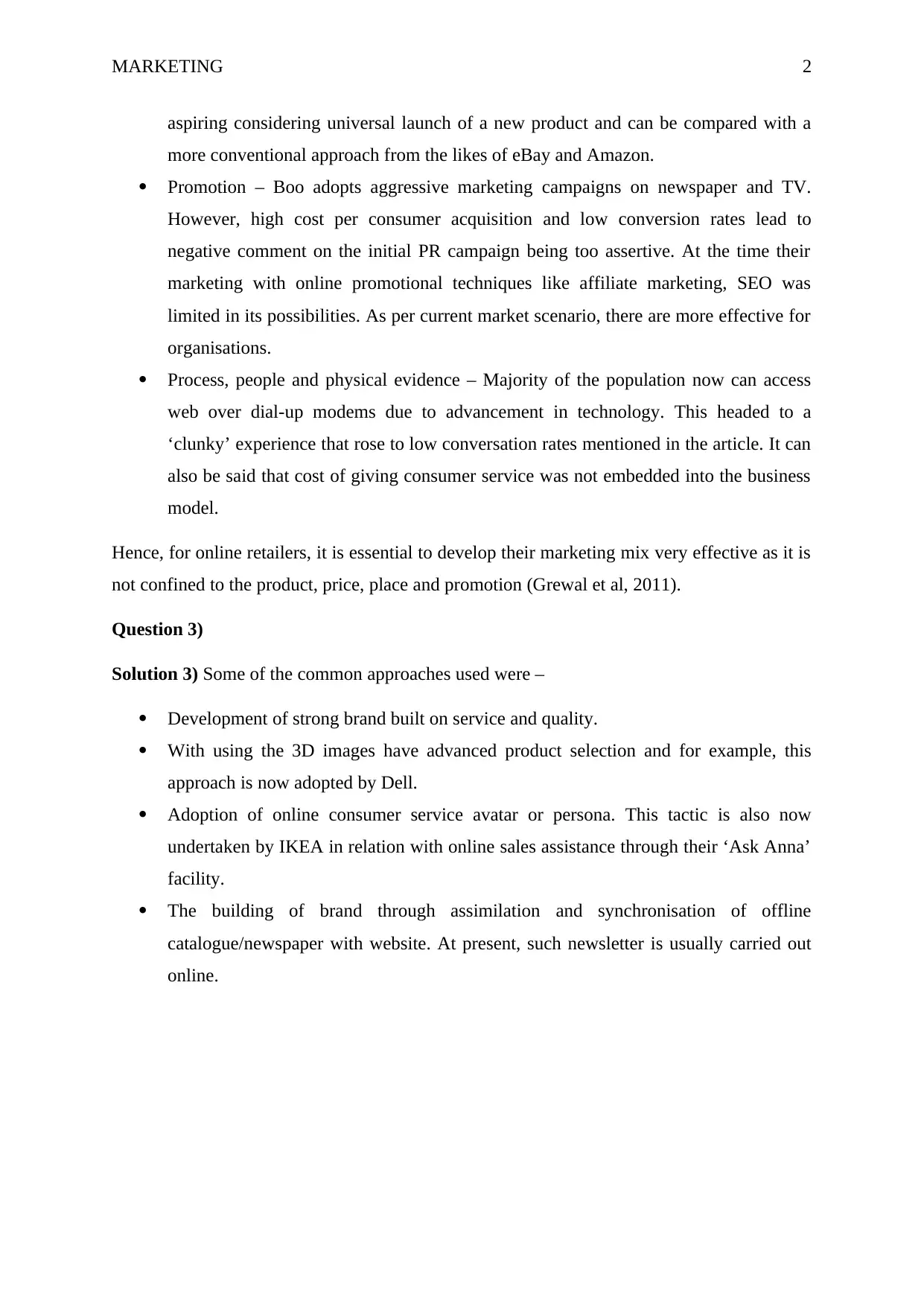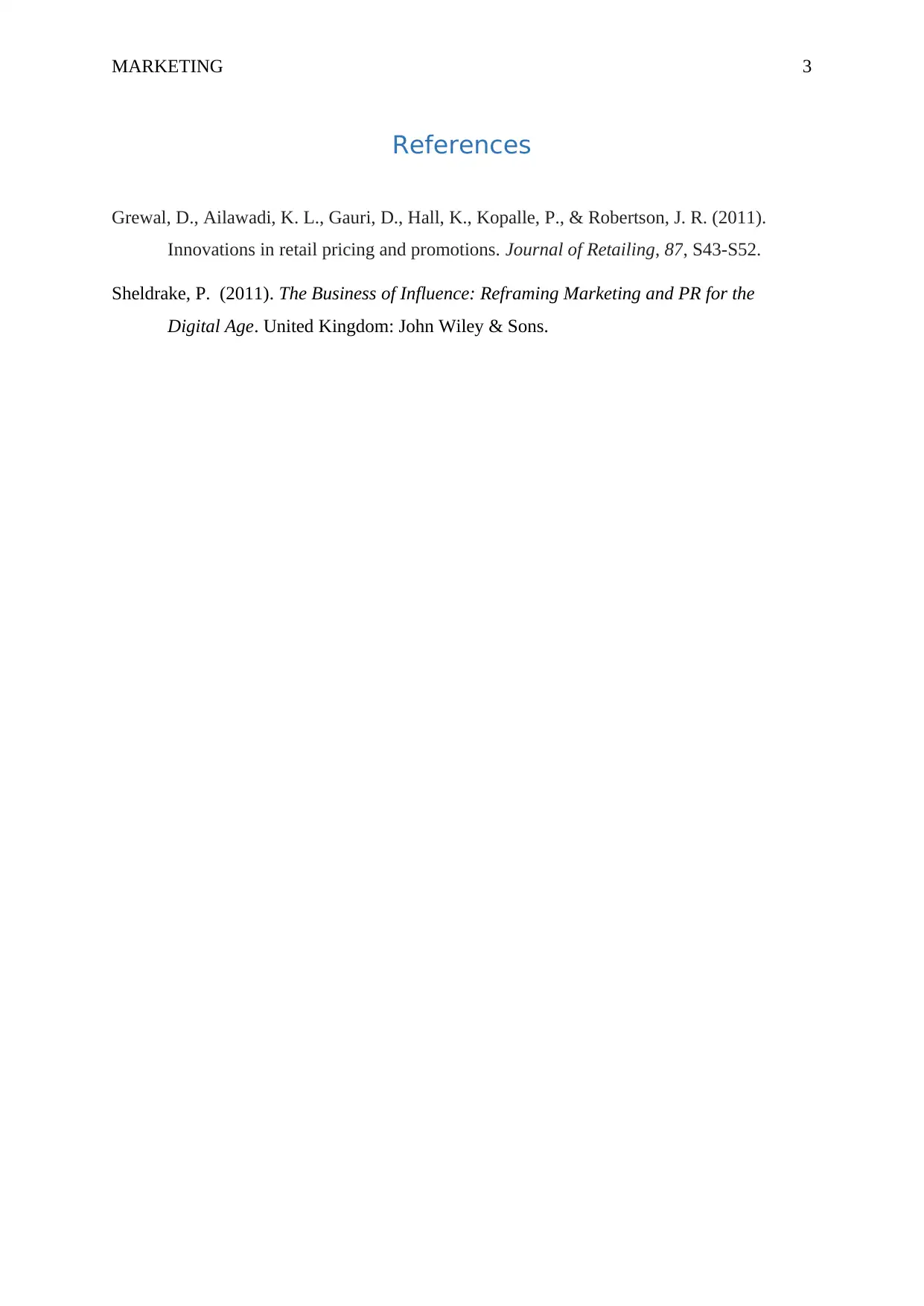Digital Marketing Report: Evaluating Boo.com's Strategies and Failures
VerifiedAdded on 2022/10/10
|4
|772
|175
Report
AI Summary
This report offers a comprehensive analysis of Boo.com's digital marketing strategies, evaluating their approach to entering the online retail market in the late 1990s. It examines the company's initial blunders, including the decision to launch simultaneously in America and Europe without adequate preparation and market research. The report delves into the shortcomings of their environmental analysis, lack of consideration for internet access limitations, and misjudgment of consumer behavior in online apparel sales. Furthermore, it critiques Boo.com's application of the marketing mix, addressing issues in product, price, place, and promotion. The analysis highlights the importance of understanding market dynamics, technological readiness, and the development of a strong brand identity. The report concludes by presenting successful strategies adopted by other companies such as Dell and IKEA, emphasizing the significance of customer service and integrated marketing approaches. The report references Sheldrake (2011) and Grewal et al. (2011) to support its findings, providing a detailed overview of the factors contributing to Boo.com's failure and offering insights into effective digital marketing practices.
1 out of 4










![[object Object]](/_next/static/media/star-bottom.7253800d.svg)